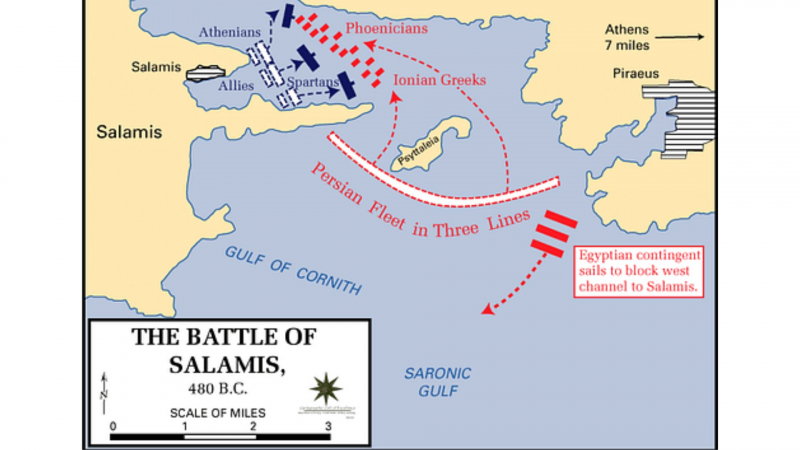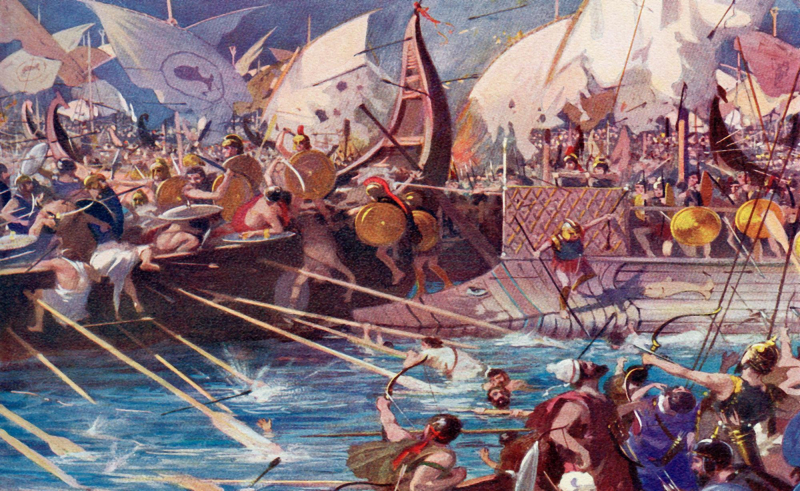The Battle Of Salamis
A coalition of Greek city-states led by Themistocles engaged the Persian Empire led by King Xerxes in a naval battle known as the Battle of Salamis in 480 BC. The underdog Greeks won handily despite being outnumbered. The conflict, which was the pinnacle of the second Persian invasion of Greece, took place in the straits between the mainland and Salamis, an island in the Saronic Gulf close to Athens. The Persian army was routed by the Greek allies in one of the biggest and most significant naval battles in history, which took place between the island of Salamis and the port city of Piraeus in Athens.
Faced with a potential loss, the Greeks put together a fleet and launched one last assault on the Persian navy in the Battle of Salamis in the late autumn of 480 BC. The Battle of Salamis, which took place in the Straits of Salamis between the island of Salamis and the mainland of Piraeus in Athens, saw the Persians raise between 900 and 1100 ships, outnumbering the Greeks by roughly two or three times. To resist the Persian fleet's blockade at the strait's two exits, the Greek fleet formed a straight line. The Persian navy was defeated by the Greeks, which came as surprising news to Xerxes. Compared to the pitiful 40 ships lost by the Greeks, the Persians lost roughly 300 ships. After the disaster at Salamis, King Xerxes made the audacious choice to withdraw most of his forces from Europe and move them to Asia. His army continued to lose members along the way to illnesses and famine. That's all about the sixth most important event in ancient Persia we want to mention.









